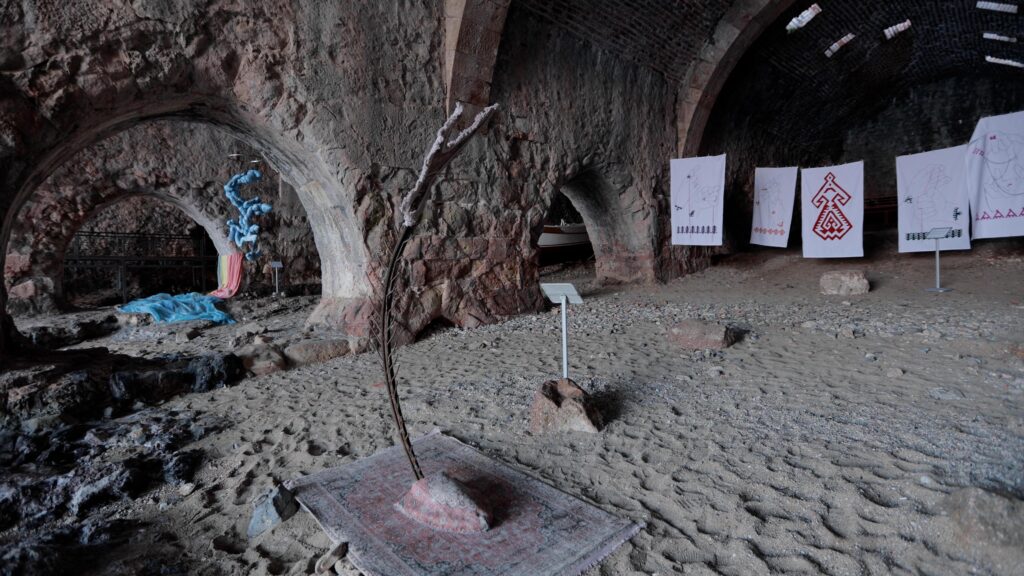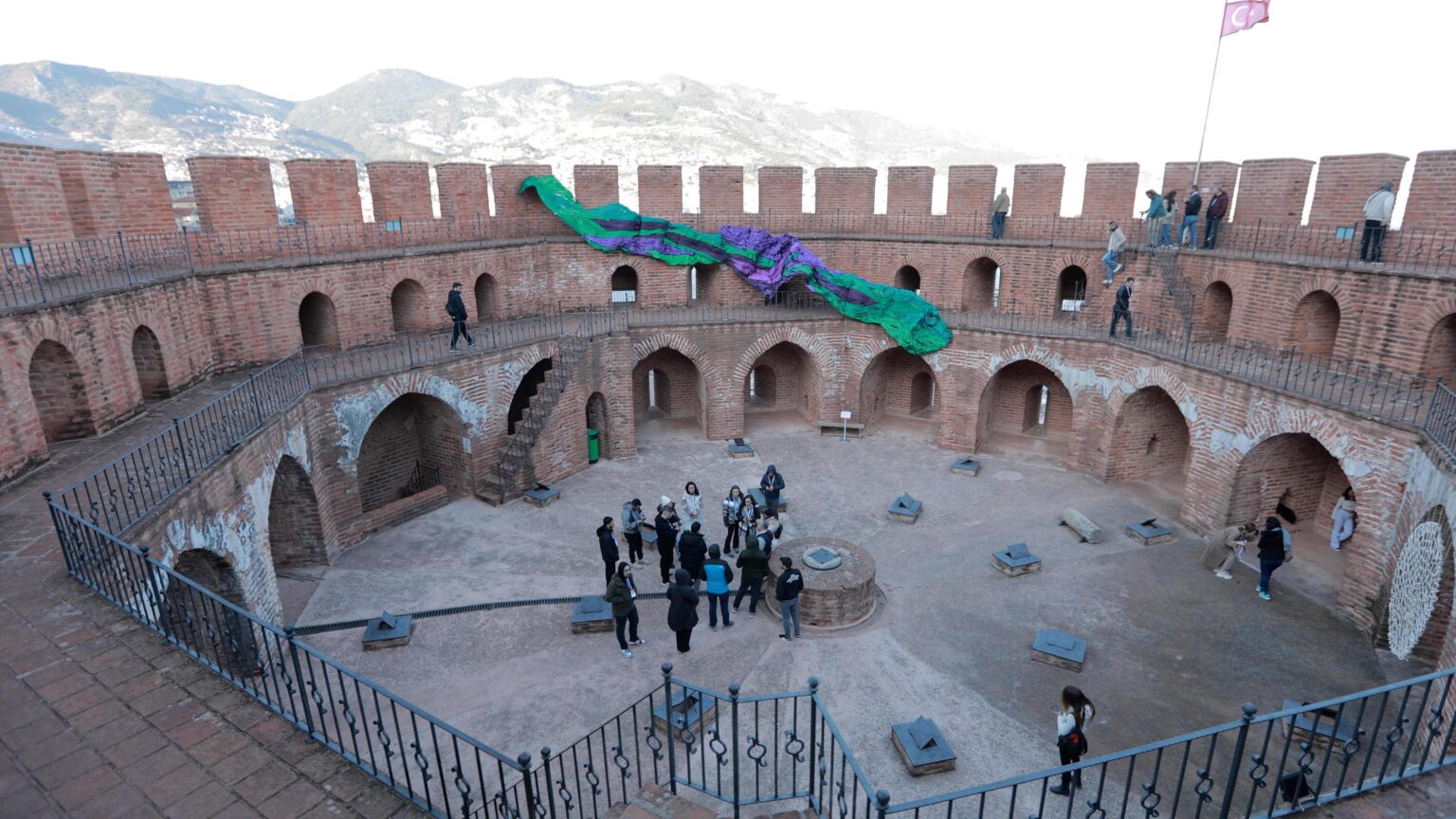The Türkiye Textile Biennial has returned for its second edition, transforming historic sites across Antalya into artistic spaces. Curated by Nihat Özdal, this year’s theme, “Wave Fabric,” delves into the connection between textiles and water. The biennial is open until 13 April 2025.
ANTALYA – Taking place from 22 February to 13 April, the biennial is hosted by the Gazipaşa District Governorship and is staged in several historic sites across Gazipaşa and Alanya, including the Ancient Cities of Selinus and Lamos, Yalan Dünya Cave, the Red Tower, Alanya Shipyard, and the Ancient City of Syedra.
“Textile industry uses 93 billion cubic metres of water annually”
Curator Nihat Özdal emphasised the textile industry’s high water consumption, stating: “93 billion cubic metres of water are used in the textile industry worldwide each year. It takes 10,000 cubic metres of water for a pair of jeans and 2,500 cubic metres for a cotton t-shirt. 20% of global water pollution comes from textiles, and approximately 100 billion new textile products are introduced to the market every year.”
“Sharing my art where it belongs is an incredible experience”
One of the artists, Özge Kahraman, a researcher at the Anatolian Speleology Group Association (ASPEG), studies the physical and artistic aspects of caves.

Exhibiting her work in a cave for the first time, she described the moment: “Thanks to the biennial, this dream of mine came true, and my works met with the audience in ‘Yalan Dünya’ Cave. Until now, as someone who explored caves, I always looked from the outside, but this time the cave itself was part of the exhibition. It’s difficult to describe the atmosphere—sharing my art with viewers in the place where I feel it most belongs was an unforgettable experience.”
Other featured artists include Thomas Jackson from the USA and Swedish textile artist Diana Orving.
Jackson explained: “What I love to do is take human-made materials, place them in natural landscapes, and make them mimic nature,” while Orving added: “The themes I explore are based on transformation, movement, and the flow of nature.”
The Second Türkiye Textile Biennial is open to visitors until 13 April 2025.
